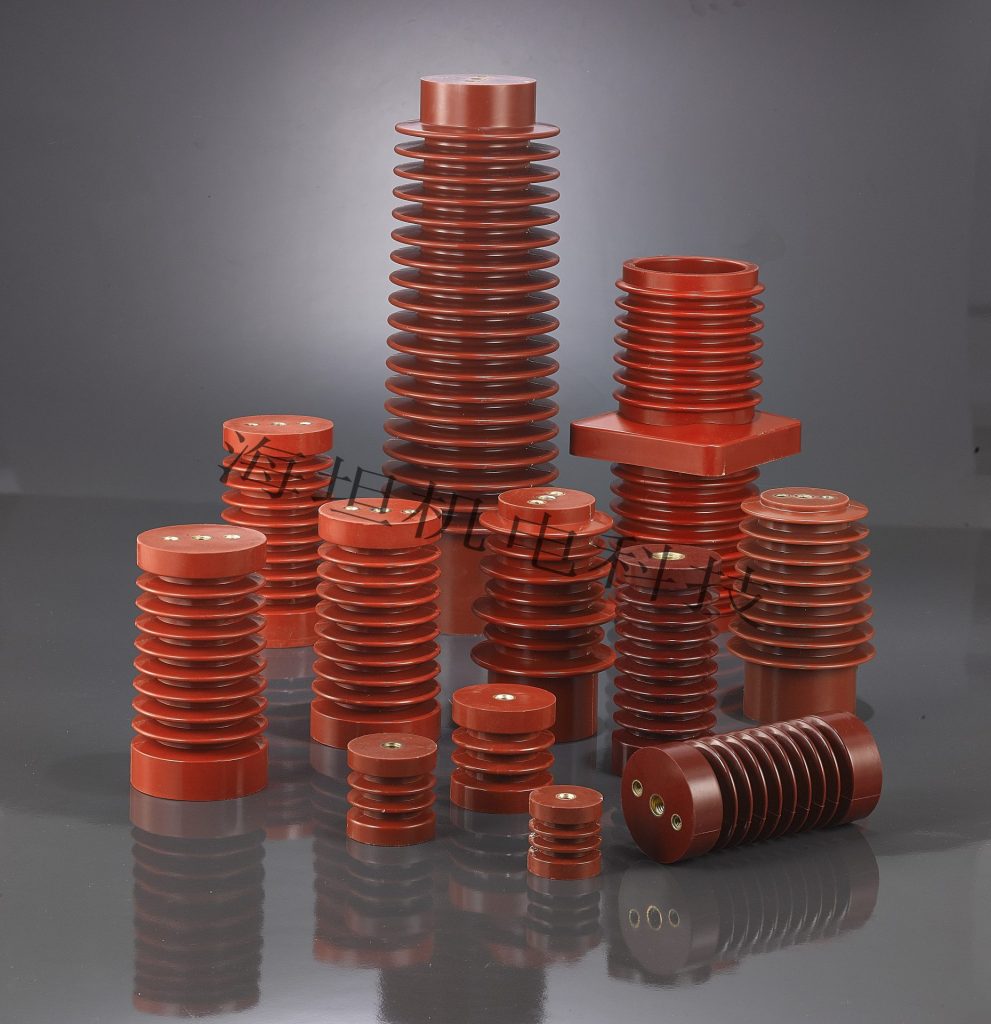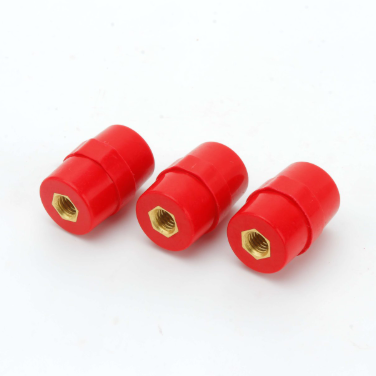DMC Insulator Structural Design Innovation: Increased Creepage Distance and Improved Anti-Flashover Capability
Introduction
In high-voltage electrical systems, the reliability of insulators directly determines system safety and performance. As power networks evolve toward higher voltages and denser configurations, the demand for materials that offer excellent insulation strength, heat resistance, and structural integrity continues to rise. Among the various insulation materials, DMC insulators (Dough Molding Compound insulators) have emerged as an innovative solution due to their superior mechanical and electrical characteristics.
Recent DMC insulator design innovations have focused on two major performance areas—increased creepage distance and improved anti-flashover capability—which significantly enhance operational reliability under harsh environmental conditions.
Understanding DMC Insulators and Their Material Advantages
Composition and Characteristics of DMC Materials
DMC (Dough Molding Compound) is a thermosetting composite material made from unsaturated polyester resin, glass fibers, and mineral fillers. Its excellent dielectric strength, dimensional stability, and resistance to heat and moisture make it ideal for electrical insulation applications.
Key DMC material properties include:
High mechanical strength and rigidity
Stable insulation performance under varying humidity
Flame retardancy and tracking resistance
Precision moldability for complex insulator shapes
Comparison: Polymer vs DMC Insulators
When comparing polymer vs DMC insulators, DMC offers notable advantages in structural consistency and surface hardness. While polymer insulators are flexible and lightweight, they may degrade under UV exposure or long-term heat. In contrast, DMC electrical insulators maintain superior surface resistance and dimensional accuracy, ensuring stable performance even in high-voltage and outdoor environments.
Why DMC Is Ideal for High Voltage Insulation Performance
Due to its dense cross-linked molecular structure, DMC provides exceptional resistance to electrical stress, leakage current, and surface tracking. This makes it the preferred choice for high voltage insulation performance, especially in switchgear, transformers, and other industrial power equipment.
Key Factors in Insulator Structural Optimization
How Insulator Structure Affects Electrical Performance
The structural design of an insulator determines the distribution of electric field stress and the length of the creepage path. A well-optimized DMC insulator structure ensures uniform stress distribution, minimizes leakage current, and enhances long-term insulation reliability.
Design Parameters Influencing Creepage Distance and Flashover Resistance
Critical design factors include:
Surface contour and shed profile
Insulator spacing and rib geometry
Material surface roughness and hydrophobicity
These parameters directly affect creepage distance and resistance to flashover, especially under contamination or humidity.
Introduction to Electrical Insulator Design Improvement Strategies
Modern electrical insulator design improvements rely on 3D modeling, simulation analysis, and high-precision molding to achieve optimal surface geometry. The goal is to balance mechanical stability, electrical clearance, and efficient current leakage control.
Innovation in DMC Insulator Design
New DMC Insulator Innovations for Safety and Reliability
Recent DMC insulator innovations integrate advanced shaping and surface texturing technologies that enhance insulation strength. These innovations help extend operational life and reduce the risk of surface discharge or contamination buildup.
Engineering Improvements in Geometry, Surface Profile, and Material Formulation
By refining geometry and surface profile, engineers can increase creepage distance without expanding the overall size of the insulator. Meanwhile, improved material formulations reduce water absorption and enhance anti-tracking performance.
How Advanced Molding Techniques Contribute to Better Insulation Performance
High-pressure molding and precise curing control allow for consistent material compaction and smooth surface finishes, both of which are vital for better DMC insulator performance and insulator design for high voltage systems.
Increased Creepage Distance: The Core of Safer Insulation
What Is Creepage Distance and Why It Matters in Insulation
Creepage distance refers to the shortest path along an insulator’s surface between two conductive parts. A longer creepage distance means higher resistance to surface leakage current, which is crucial in humid, dusty, or polluted environments.
Design Modifications That Extend DMC Insulator Creepage Distance
Modern DMC insulator design incorporates multi-shed structures, ribbed surfaces, and water-repellent coatings to maximize DMC insulator creepage distance. This directly translates to improved voltage endurance and operational stability.
Correlation Between Surface Leakage Path and Voltage Endurance
The relationship is simple: the longer and cleaner the leakage path, the better the electrical insulation reliability. DMC’s surface hardness and hydrophobicity help maintain stable performance even after prolonged field exposure.
Improved Anti-Flashover Capability
What Causes Flashover in High-Voltage Insulators
A flashover occurs when the air surrounding the insulator becomes ionized, allowing a discharge to jump across its surface. This can result from contamination, moisture, or excessive electric stress.
How DMC Structural Design Reduces Flashover Risks
Through anti-flashover insulator design, DMC insulators reduce the likelihood of surface discharges by managing electric field distribution and increasing the creepage path. Smooth surface finishes and optimized rib geometry minimize charge accumulation and corona inception.
Real-World Applications Showing Improved Anti-Flashover Performance
In substations, railway systems, and industrial switchgear, DMC insulators have shown measurable reductions in flashover incidents. Field tests demonstrate improved high voltage insulation performance and reduced maintenance frequency.
DMC Insulator Performance in High Voltage Systems
Performance Testing and Evaluation Metrics
Comprehensive testing includes tracking resistance, impulse withstand voltage, and leakage current performance. These tests confirm DMC electrical insulator stability under both AC and DC stresses.
Long-Term Reliability in Outdoor and Industrial Conditions
DMC’s low water absorption and high tracking resistance ensure long-term reliability even under temperature extremes, pollution, or mechanical vibration.
Impact on System Safety and Maintenance Cost Reduction
By improving anti-flashover performance and extending creepage distance, DMC insulators help reduce unplanned outages and maintenance costs, ensuring safer and more cost-effective power delivery.
Conclusion
The structural design innovation of DMC insulators marks a significant advancement in modern electrical insulation technology. Through increased creepage distance and improved anti-flashover capability, these insulators offer a robust solution for high-voltage systems requiring superior reliability and safety. As manufacturing techniques and material science continue to evolve, DMC insulator design will play a key role in building more efficient and resilient electrical infrastructure.
FAQ
Q1: What makes DMC insulators different from polymer insulators?
DMC insulators offer higher dimensional stability, surface hardness, and better anti-tracking performance, making them more suitable for demanding high-voltage environments.
Q2: How can engineers improve creepage distance in insulator design?
By optimizing the surface geometry—adding ribs, sheds, and hydrophobic coatings—designers can significantly extend the creepage path and prevent surface discharge.
Q3: Are DMC insulators suitable for outdoor applications?
Yes. Due to their weather resistance, mechanical strength, and anti-flashover performance, DMC insulators are widely used in outdoor substations, transformers, and switchgear.
--- END ---
Already the latest article
© Copyright 2024 China Haitan Electromechanical Technology Co., Ltd. All rights reserved.SUPPORT BY:JUNJ Privacy Policy


 E-mail:
E-mail:  No. 20 Lingyun Road, Dongfeng
No. 20 Lingyun Road, Dongfeng 
